Strange but interesting sports at ABG5
The 5th Asian Beach Games (ABG5), which is being held in Da Nang from 24 September - 3 October, features 22 beach sports. Some of which, however, are still strange to some foreign countries.
Listed below are some lesser-known but fascinating sports at this continent-level event.
Martial arts
Martial arts are codified systems and traditions of combat practices, which are practiced for a variety of reasons: as self-defense, military and law enforcement applications; as competition, physical fitness, mental and spiritual development; as well as entertainment and the preservation of a nation's intangible cultural heritage. Traditional Vietnamese Martial Arts can be loosely divided into those of the Sino-Vietnamese descended from the Han, and the Chams or indigenous Vietnamese.
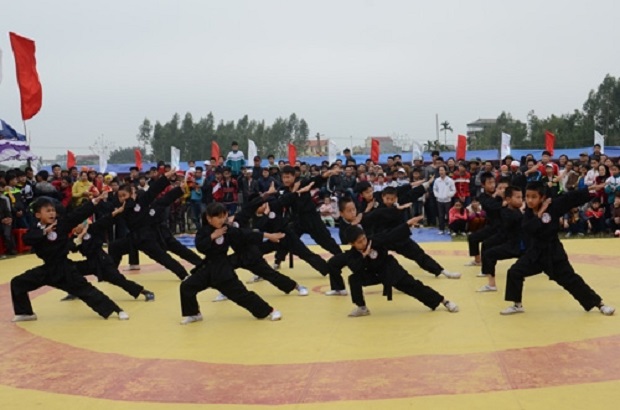 |
Vovinam
Vovinam is practiced with and without weapons. It is based on the principle of between hard and soft. It includes training of the body as well as the mind. It uses force and reaction of the opponent. Vovinam also includes hand, elbow, kicks, escape- and levering techniques. Both attack and defense techniques are trained, as well as forms, combat and traditional wrestling. The wide range of techniques include punching, kicking, forms, wrestling, sword, staff, axe, folding fan and others.
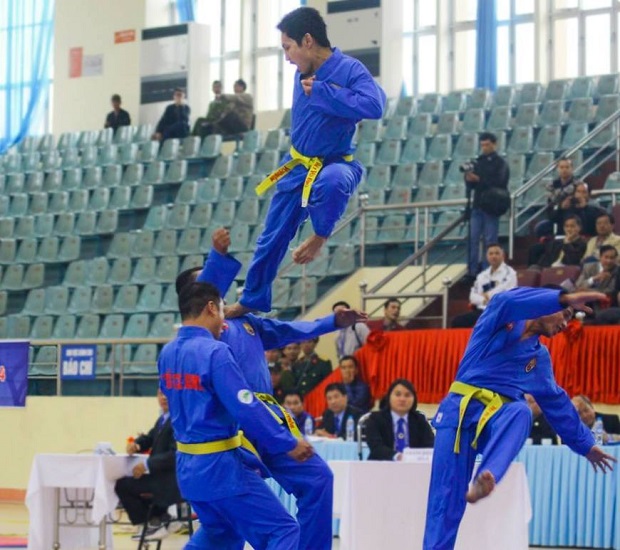 |
Self-defense techniques cover defense against weaponless attacks like choking from behind and defense against attacks with knife or sword.
Kurash
Kurash is an ancient type of upright jacket grappling which originated in the territory of modern Uzbekistan. According to the latest scientific research the age of Kurash is at least three and a half thousand years. Kurash is an Uzbek word. It means – 'reaching the goal with the just or fair way'. Today Kurash is an official sport in the competition programs of three different Asian Games- Asian Summer Games, Asian Indoor and Martial Arts Games, and Asian Beach Games.
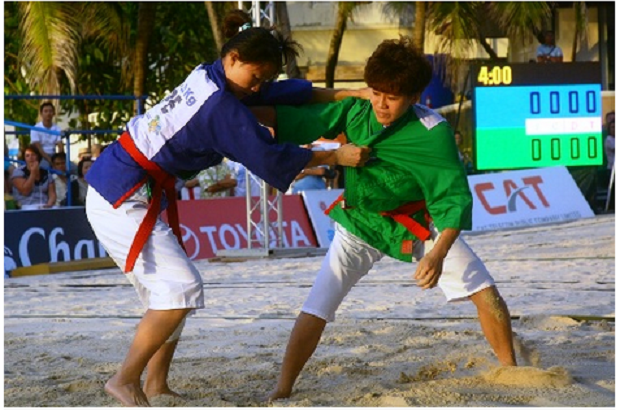 |
Kurash is an ancient national martial art with roots going back to many thousand years. It is the essence of traditions and philosophy of the Uzbek people – humanism and courage, respect to opponent and ability to go till the aim is reached. Kurash is one of the youngest international sports, practiced today all over the world – from Bolivia, Brazil, Dominican Republic, Fiji and New Zealand to South Africa, Mauritius, Ireland, India and Japan.
Woodball
Woodball is played using wooden mallets instead of clubs, and players try to hit a ball through narrow gates. According to Focus Taiwan, the game was invented in 1990 by Weng Ming-hui, who was trying to create an alternative to golf in his backyard to avoid expensive green fees.
Under such motive, he was trying to create a ball sport, in which the playing-ball would not fly up (appropriate to be played on the grass ground) and the sport itself should be economic (neither expensive nor large ground), so that he could invite more friends to enjoy the fun of playing ball in the green field.
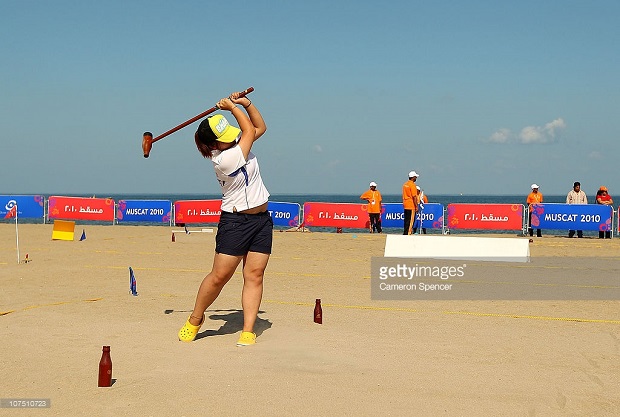 |
After two years’ experiment and adjustment, the equipment and the regulation of the ball game have emerged finally as they are today. From that time on, the ball game is officially named Woodball.
(Source: http://iwbf-woodball.org)
Sambo
Sambo is a Soviet martial art and combat sport. The word ‘SAMBO’ is an acronym for SAMozashchita Bez Oruzhiya, which literally translates as ‘self-defense without weapons’. Sambo is relatively modern since its development began in the early 1920s by the Soviet Red Army to improve their hand-to-hand combat abilities. It was intended to be a merger of the most effective techniques of other martial arts.
There are multiple competitive sport variations of Sambo. Below are the main formats that are recognised by International Sambo Federation. (FIAS)
Sport Sambo: is stylistically similar to Olympic Freestyle Wrestling or Judo, but with some differences in rules, protocol, and uniform. For example, in contrast with judo, Sambo allows some types of leg locks, while not allowing chokeholds. It focuses on throwing, ground work and submissions, with (compared to Judo) very few restrictions on gripping and holds.
Combat Sambo: Utilised and developed for the military, Combat Sambo resembles modern mixed martial arts, including extensive forms of striking and grappling. Combat Sambo allows punches, kicks, elbows, knees, headbutts and groin strikes. Competitors wear jackets as in sport sambo, but also hand protection and sometimes shin and head protection.
Freestyle Sambo: Created and debuted by the American Sambo Association (ASA) in 2004, these rules differ from traditional Sport Sambo in that they allow choke holds and other submissions that are not permitted in Sport Sambo such as certain neck cranks and twisting foot locks. Freestyle Sambo, like all Sambo, focuses on throwing skills and fast ground work. No strikes are permitted in Freestyle Sambo.
Jujutsu
Jujutsu is a Japanese martial art and a method of close combat for defeating an armed and armored opponent in which one uses no weapon or only a short weapon. ‘Jū’ can be translated to mean ‘gentle, soft, supple, flexible, pliable, or yielding’. ‘Jutsu’ can be translated to mean ‘art’ or ‘technique’ and represents manipulating the opponent's force against himself rather than confronting it with one's own force.
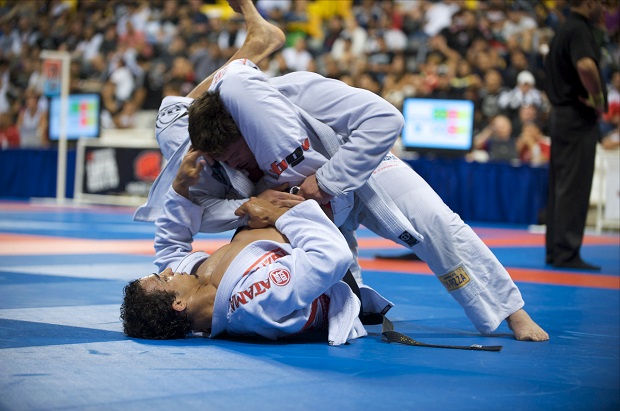 |
Jujutsu developed to combat the samurai of feudal Japan as a method for defeating an armed and armored opponent in which one uses no weapon, or only a short weapon. Because striking against an armored opponent proved ineffective, practitioners learned that the most efficient methods for neutralizing an enemy took the form of pins, joint locks, and throws. These techniques were developed around the principle of using an attacker's energy against him, rather than directly opposing it.
Today, jujutsu is practiced in both traditional and modern sports forms. Derived sport forms include the Olympic sport and martial art of judo, which was developed by Kanō Jigorō in the late 19th century from several traditional styles of jujutsu, and Brazilian jiu-jitsu, which was derived from earlier (pre–World War II) versions of Kodokan judo.
Kabaddi
Kabaddi is a contact sport that originated in Ancient India and has different forms and types. There are broadly two types of Kabaddi played - International and Indian. The international format is recognised by the International Kabaddi Federation and is followed by all the member countries. Since the sport originated in India, it has various Indian styles that differ in rules in different parts of the country.
The basic idea of the game came from Hunting. When a pack of hunters went for the hunt, they used to hunt and defend as a group. So, they practiced this on a daily basis and gave this beautiful game to the world.
 |
The basic rules of this game are very simple. Each team has 7 field players and 3-5 reserve players. The length of each match is 40 minutes which is divided into 2 halves of 20 minutes each.
The size of arena varies for men and women. For men, it is 10×13 m2 while for women it is 8×12 m2. This arena is divided into two halves. Each team occupies one half and changes to the other side after half time.
Both teams take turns alternatively. On each turn, the team sends one of its field players to opposite half. This is called a raid and the player is called raider. Duration of a raid is typically 30 seconds.
While on the raid, a raider has to continuously chant ‘Kabaddi Kabaddi’ and cannot exhale. If raider exhales before completion of the raid, then he will be declared out. Then the team has to play with rest of the players.
(Source: Internet/ Da Nang Today)